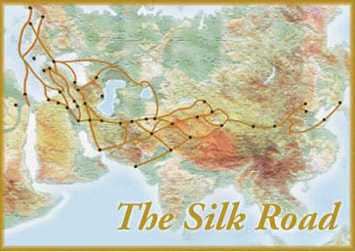I always thought culture was something that you are born with and born into. It’s easy to grow up and have all your values, meanings and ways of life already established by family and friends. After reading the topic, Defining Ancient Cultures, I thought it would be an easy and straight forward topic to tackle. Ancient means old and culture is something I personally know and experience. I thought how hard could this be? However, after reading the topic out loud, I began to wonder where to begin, where to start my thinking process of how to define these people. What troubled me was trying to grasp the idea that generation and generations ago, people were not born into anything. There was a time when these people were gradually creating civilization, when they were making it easier for us.
Following through with the readings of Crystal, I came to distinguish four entities that are necessary in the approach of defining ancient cultures. Ancient cultures can be defined by their distinct language, cultural progression, ethnicity and religion. A particular language or dialect can be used to define an ancient culture. It was astonishing to me to find out that there are 3,000-10,000 different languages. Off the top of my head, I can use my fingers to count how many languages I am fully aware of. Written language is also a great distinguisher when differentiating ancient cultures. The ancient peoples used writing to help store, protect and record their sacred knowledge. Each culture had its own unique and specific set of documents which allows for one to distinguish a culture based on its text. Sometimes one cannot fully rely on language to help define an ancient culture due to the fact that some cultures do not have a name for their culture and others have many. For example, some people in Africa refer to their language as “our language”, which clearly would be of no help while trying to define a specific culture by its language.
Reflecting on the readings of Levinson and Ember, the second entity that can be used as a guide specifically looks into cultural progression. By looking at culture in general, one could distinguish whether people had more culture or less culture. According to their progress, societies with less movement were seen as primitive societies. These primitive people could have adopted this label due to their poor geographic area. Surprisingly, the geography of people affected their culture. Sometimes it worked to their advantage and other times it halted growth because of its location, lack of resources and complexities it imposed on the use of technology. Sharing culture meant learning together, it meant functioning together as a unit of people. While looking to define an ancient culture, one could look at the cultural acts of the people. The activities and institutions of a particular culture help while differentiating cultures. Some ancient cultures may have created certain social institutions in which another had not. The activities among the people are unique to its culture. The rules, social groups and legends are based on its own people.
One could also use ethnicity to define an ancient culture. This is seen as the third entity. Ethnicity often labelled groups of peoples. An ethnic group would share the similarities of race, location, religion, class rank, etc. Those who were labelled “tribal” groups were often seen as lower class. Thus, one could identify a certain ancient culture as a tribal group. For the ancient cultures, their ethnic identities defined who they were. This shows how drastic society has changed because modern day society allows people to have many ethnicities, not just one.
The last entity one could use while defining an ancient culture is their religion. Religion provided explanation for the ancient cultures. It allowed them to find meaning and direction in everyday life. Religion unified the people which allowed for their culture to prosper. Religion was and is a cultural system. It was also used as an indicator of the progression level of society. Religion can be used to define how developed or advanced an ancient culture was. Religion entails many myths, deities and gods whom are different for each culture. These figures allowed for there to be a commonality between the people of a culture. It allowed them to embrace in the same beliefs. Religion instilled ethical values that may differ among cultures. For example, what was ethically correct in the eye's of one culture, might have been sinful to another. Religion helps to defined ancient cultures because each culture had its own variation of traditions.
I believe all these entities are useful when having to define an ancient culture. Setting aside the contents of the readings, I found an underlying message. I feel as if all the ancient cultures should be defined as the creators of civilization. I believe people in that era engaged in the world in order to provide exactly what they needed in order to survive. They gradually created and built civilization. They created language in order to communicate, culture in order to have structure, ethnicity in order to differentiate each other and religion in order to have belief in something larger than themselves. These people were the masters of civilization.
